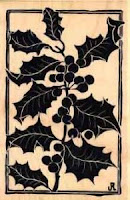 |
| White Angel resembles marshmellows |
Why does new White Angel Althea from Garden Debut® remind
me of marshmellows?
Marshmellows are one of the earliest confections
known to man and were originally made from the root sap of the Marsh Mallow (Althea officinalis) plant and used
medicinally. The scientific genus name indicates the distinctive flower
structure shared by plants in the Mallow Family, Malvaceae, and there are a lot of them. White Angel Althea, Hibiscus syriacus, is also in this plant family and is a close
relative of the Marsh Mallow, sharing
the same type of flower.
 |
| Modern day Marshmellows |
The species name of Marsh Mallow, officinalis, indicates that this Mallow
is an “official” member of the medieval list of medicinal plants, known as Hortus Medicus. From olden times, Marsh
Mallows have been dug up and a mucilaginous tea brewed from the roots to soothe
sore throats. Later, the moist and
sticky root sap became the origin of the confection we know today as the fun
food, marshmellows. Food historians might like to learn more.
 |
| Photo from Not Without Salt Blog |
Or DIY and make
Ashley Rodriguez’ own version of the American fun food. Use Hibiscus “Juice”
made from dried Hibiscus flowers, purchased as Jamaica Flowers or
Roselle at the Mexican grocery, in order to make the marshmellows pink. Find the step-by-step
directions at her Not Without Salt blog.
ALERT
Although
White Angel Althea
flowers do look like dreamy white marshmellows floating in the garden, and
though they are relatives and their flowers are similar to the
Marsh Mallow, they are not to be eaten. The Marsh Mallow is herbaceous and easy
to dig up when sacrificing the plant
to obtain the roots
for a recipe. But new White Angel Althea is a woody landscape
shrub from Garden Debut®
that is not eaten, nor would you want to deprive your landscape of this lovely
flowering shrub. Right?
























